Shared Lane Symbol
The Shared Lane Symbol used in Brisbane, Australia, is adapted from the Shared Lane Arrow first introduced in Denver, Colorado, USA. The bicycle symbol, typically 1.1–1.2 m in length, was originally defined in the Australian Manual on Uniform Traffic Control Devices. In Brisbane, the symbols are yellow to indicate an advisory or warning purpose and to distinguish them from identical white regulatory symbols used in designated bike lanes.
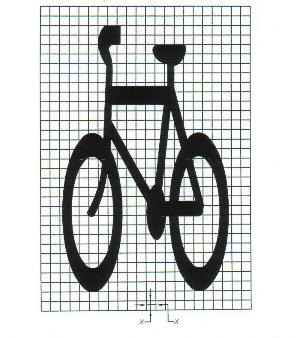
Placement of the symbol varies depending on lane width. It may be centered on a white edge line, placed to the side of a wide lane, or located in the center of a narrow lane. While the recommended size is at least 1.2 m, many symbols used in practice are narrower.
This symbol is often used in locations where dedicated bike lanes are not feasible. Reasons can include low cyclist numbers, cost, or the need to preserve on-street parking or avoid road widening. Use of the Shared Lane Symbol also avoids certain issues associated with bike lanes, such as:
- Requirements for cyclists to remain in the bike lane regardless of conditions
- Design choices that place bike lanes in the “door zone” beside parked vehicles
- Increased potential for turning conflicts at intersections
Shared Lane Arrow
The Shared Lane Arrow combines a bicycle symbol with the outline of an arrow. The arrow indicates the general area for bicycle travel without confining cyclists to a precise position within the lane. Its purpose is to:
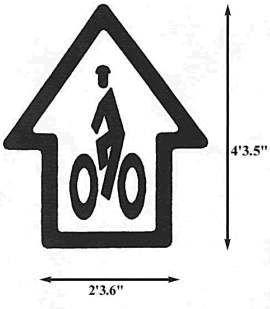
- Remind cyclists of the correct direction of travel
- Increase awareness of cyclists’ right to use the road
The Shared Lane Arrow was first used in Denver, Colorado, and later in San Francisco, California. The Bicycle Technical Committee of the U.S. National Committee on Uniform Traffic Control Devices (NCUTCD) has been working to develop a recommended design and supporting language for inclusion in the U.S. Manual on Uniform Traffic Control Devices (MUTCD).
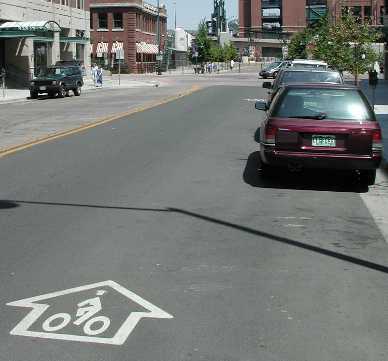
The photograph above shows Shared Lane Arrows in place on a Denver street. The arrows should be placed outside the “door zone” so that bicyclists are encouraged to travel a door’s width away from on-street parking.
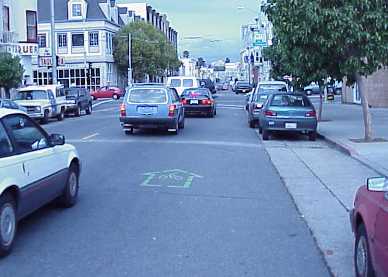
A green Shared Lane Arrow in San Francisco. Note the placement outside the “door zone.” There is ample room for motorists to pass bicyclists in the same lane. San Francisco is studying the effectiveness of these pavement markings.
Shared Lane Symbol Placement
Shared Lane Symbols may be positioned on the edge line, along the side of a wide shared lane, or in the center of a narrow lane. Placement should guide bicyclists to ride outside the “door zone” created by parked vehicles.
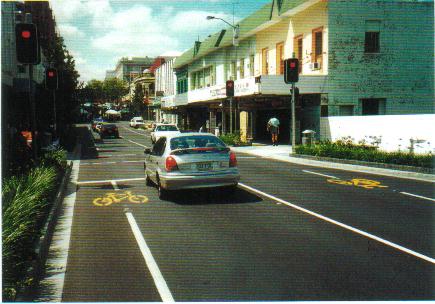
Edge Line: The shared lane symbol can be centered on the edge line separating the shoulder from the travel lane. In this example in Brisbane, there is no on-street parking.
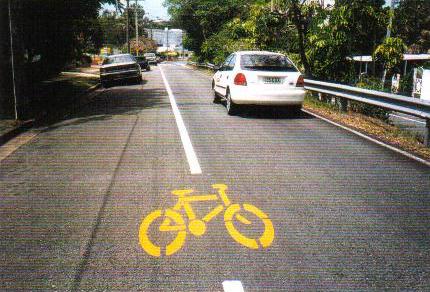
Edge Line: This example, also from Brisbane, shows the symbol centered on the edge line where there is on-street parking.
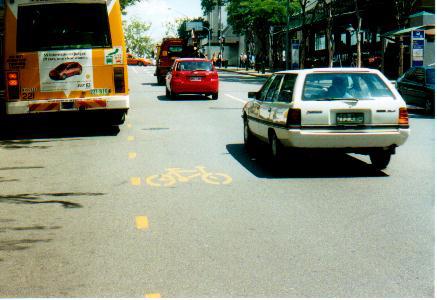
Side of Shared Lane: This example (Adelaide Street in Brisbane) shows the symbol on the left edge of a shared lane. A bus stop is on the left.
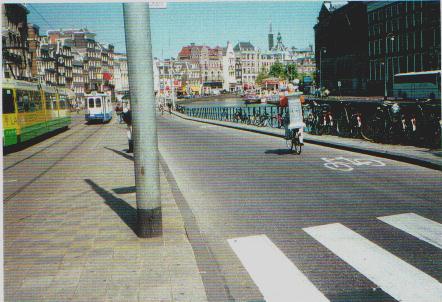
Side of Shared Lane: This example from Amsterdam, Netherlands, shows the symbol on the right edge of a shared lane.
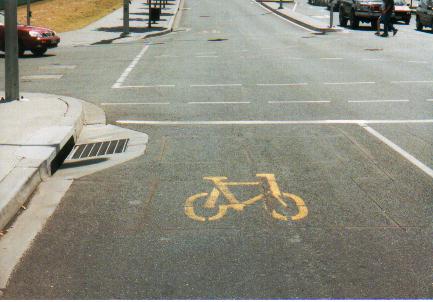
Center of a Narrow Lane: In Brisbane, bicycle symbols appear in the center of narrow lanes too small for safe sharing. Placement emphasizes that cyclists continuing straight should not ride along the edge of the lane. Traffic signal loop detectors sit beneath the bicycle symbol.
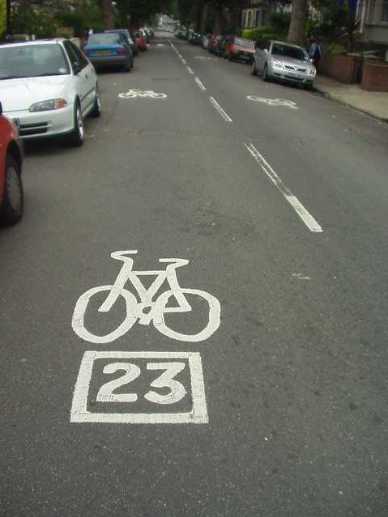
Center of a Narrow Lane: This example from the UK shows a (crude) bicycle symbol and route number combined in a pavement marking on a narrow roadway (Camberwell Grove, inner southeast London).
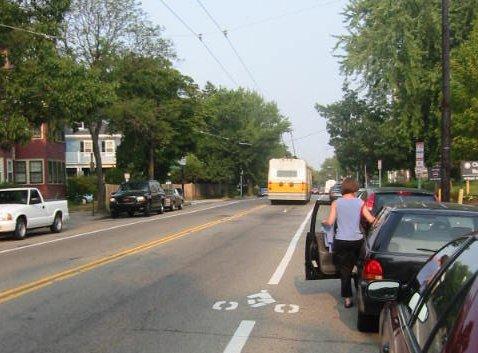
Away from the Door Zone: Cyclists riding on the lane line may clear some opening doors. Riding farther inside improves clearance from wide doors. Unlike bike lanes, shared lane symbols allow cyclists to use as much of the travel lane as required for safety.